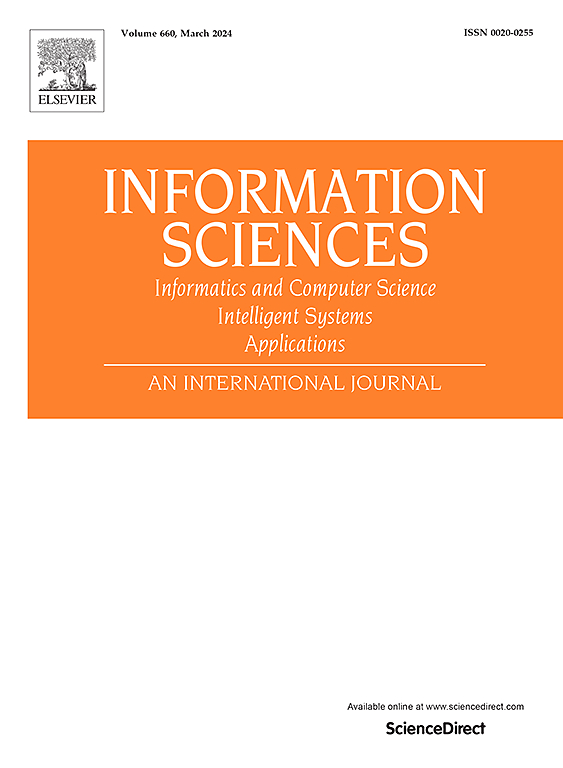一维离散时间量子行走的包络
IF 6.8
1区 计算机科学
0 COMPUTER SCIENCE, INFORMATION SYSTEMS
引用次数: 0
摘要
提出了一个由量子初始态启动并由一个硬币算子控制的一维离散量子行走的数学模型。当硬币算子为翻转算子时,采用路径分析公式计算位置概率分布。对于一般硬币算子,利用矩阵分解将其转化为等价的翻转算子。当一个步行者经过n步进化时,观察到步行者占据任何给定位置的概率同时存在最大值和最小值,而与量子初始态无关。通过将这些极端位置连接在一起,划定了一个受限区域,其边界被指定为量子行走的包络。值得注意的是,包络与量子初始态无关。为了方便该包络线的计算,将相关公式转化为有理数表达式,其中分子和分母都用系数为偶数的多项式表示。对这些多项式进行分类以确定分子多项式的系数。进行分析以确定包络最大值的位置,从而检查位置概率分布的最大值。本文章由计算机程序翻译,如有差异,请以英文原文为准。
The envelope of one-dimensional discrete-time quantum walk
A mathematical model is presented for a one-dimensional discrete-time quantum walk, which is initiated from a quantum initial state and governed by a coin operator. When the coin operator is a flip operator, a path analysis formula is employed to compute the position probability distribution. For a general coin operator, matrix decomposition is utilized to transform it into the equivalent flip operator. When a walker undergoes steps of evolution, it is observed that the probability of the walker occupying any given position exhibits the existence of both maximum and minimum values, irrespective of the quantum initial state. By linking these extreme positions together, a confined region is delineated, the boundary of which is designated as the envelope of the quantum walk. Remarkably, the envelope is independent of the quantum initial state. To facilitate the computation of this envelope, the relevant formulas are transformed into rational expressions, wherein both the numerators and denominators are represented by polynomials with even integer coefficients. These polynomials are classified to determine the coefficients of the numerator polynomials. An analysis is conducted to identify the location of the maximum value of the envelope, thereby examining the maximum value of the position probability distribution.
求助全文
通过发布文献求助,成功后即可免费获取论文全文。
去求助
来源期刊

Information Sciences
工程技术-计算机:信息系统
CiteScore
14.00
自引率
17.30%
发文量
1322
审稿时长
10.4 months
期刊介绍:
Informatics and Computer Science Intelligent Systems Applications is an esteemed international journal that focuses on publishing original and creative research findings in the field of information sciences. We also feature a limited number of timely tutorial and surveying contributions.
Our journal aims to cater to a diverse audience, including researchers, developers, managers, strategic planners, graduate students, and anyone interested in staying up-to-date with cutting-edge research in information science, knowledge engineering, and intelligent systems. While readers are expected to share a common interest in information science, they come from varying backgrounds such as engineering, mathematics, statistics, physics, computer science, cell biology, molecular biology, management science, cognitive science, neurobiology, behavioral sciences, and biochemistry.
 求助内容:
求助内容: 应助结果提醒方式:
应助结果提醒方式:


